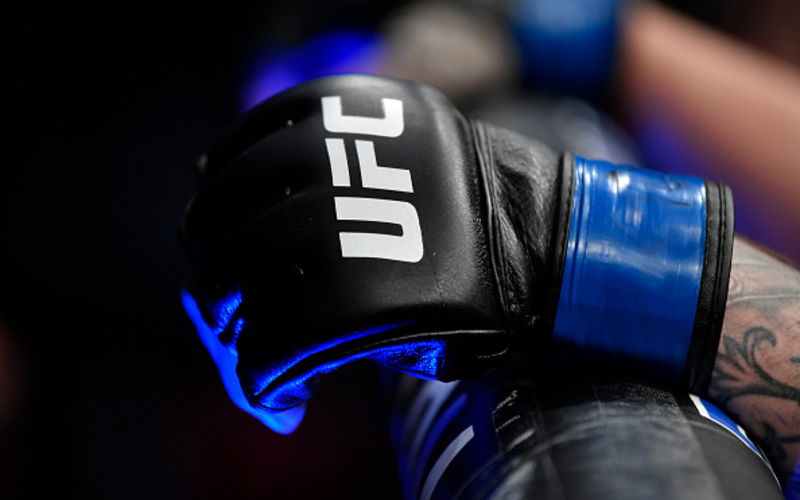Weight cutting is a practice that has long been in place across almost all combat sports. The reason for weight cutting comes from the existence of weight classes that have been established in order to prevent athletes from gaining too large of a size advantage over one another. Weight cutting is seen in a wide variety of combat sports but its presence and impact are particularly noticeable in regards to MMA.
Weight Cutting and MMA
What is Weight Cutting and How Do Fighters Do It?
Weight cutting is different from traditionally losing weight, and can be seen as a rapid form of non-permanent weight loss. Fighters are not aiming to lose that weight permanently and all weight is lost with the intention of gaining most if not all of it back in time for fight night. The process of cutting the weight involves the athlete severely dehydrating themselves in order to make the required limit for the weigh in. Once the weigh in is completed, the athlete can refuel themselves and replenish all fluids that were lost which increases their body weight dramatically.
A study conducted by Sungjun Park analyzed the main methods which MMA fighters use in order to cut weight. Park used a sample size of 92 professional male MMA fighters primarily fighting and training in California and New Mexico. The participants in the study ranged in weight class from Atomweight (105lbs) all the way up to heavyweight (265lbs), Park’s work revealed that a variety of methods are used to achieve a sufficient level of dehydration in order to cut weight. The most common found in his study were food restriction (used by 82.6% of participants), water loading (72.8%), sauna use (69.6%), increased levels of training (69.6%), sweatsuit use (59.6%) and finally salt baths which were used by 29.3% of the participants (Park et al 2019). Another study conducted by Ben Crighton highlighted different methods used by fighters to engage in rapid weight loss with 67% engaging in a process known as water loading where an excess of water is consumed while decreasing sodium levels believing it will trigger a “flushing” effect that will encourage excessive urination in turn leading to increased levels of dehydration. Crighton’s study also showcased an element that Park’s failed to. This was the use of diuretics and other prescription medicines and supplementation to aid in a fighter’s weight cut. Crighton’s work revealed that 37% of fighter in his sample consumed diuretics of some form and 73% of athletes consumed nutritional supplements in some way shape or form. Shockingly a massive 61% of these athletes did not know whether their supplements had been tested for all banned substances (Crighton et al 2015). Perhaps even more worryingly both Park and Crighton’s study revealed that fighters rarely get professional advice from a dietician in regard to their weight cut. The number who do is around 20%. It is far more likely for advice and methods to be taken from other fighters and coaches from their gym. This is dangerous as weight cutting can cause severe physical and psychological harm if overdone and fighters are putting themselves at risk, engaging in this practice while not availing of professional expertise. (Park et al 2019), (Crighton et al 2015)
Dangers of Weight Cutting and Health Implications
A study by Emerson Franchini analyzed the health implications that come about due to extreme weight cutting, also known as rapid weight loss. Side effects such as memory loss, concentration, tiredness and even low self-esteem have all been observed in athletes taking part in rapid weight loss. Cognitive abilities were also decreased with fatigue, confusion, rage and depression all becoming more visible in these athletes. It is clear that these factors and variables can influence a fight in a number of different ways and may lead to several different outcomes. In a sport such as MMA where one bad decision can lead to a fighter being knocked out or submitted, the ability to follow their coaches instructions, ignore all distractions leading up to and during the fight and keep their focus and concentration on the task at hand are absolutely paramount. Weight cutting directly dampens these abilities. It is not just mental state which weight cutting affects, physically fighters can feel drained and weak by the cut depending on how severe it was (Franchini et al 2012). Crighton’s work examined this briefly, speaking of how the likelihood of brain trauma was increased by the dehydration that takes place during a weight cut. The brain trauma is particularly likely to happen in MMA as compared to other combat sports due to strikes being absorbed after losing consciousness. This again depends on how severe the cut was and stating that MMA leads to more brain trauma overall is untrue, given the amount of ways a fight can end which do not necessitate excessive impacts to the head. (Crighton et al 2015)
It should be noted that in extreme weight cuts fighters have been hospitalized or even worse. Khabib Nurmagomedov was hospitalized because of his weight cut before his UFC 209 bout with Tony Ferguson and the fight would ultimately fall through. Nurmagomedov would later come out and say that he felt he had been close to death and that apparently doctors had told him the same thing upon his arrival at the hospital. Indeed death is something that has unfortunately happened before due to weight cuts. One example is Leonardo Souza, a Brazilian fighter who passed away in 2013 due to a weight cut. He had been attempting to lose about 20% of his body mass, around 15kg. Deaths due to weight cutting have not just been limited to MMA. In 1996 Judoka Chung-se-Hoon was found dead in a sauna. He had been a favorite to take gold in the 65kg category at the Atlanta Olympic games which were due to take place three months later. He had suffered a heart attack. Wrestling also saw the deaths of three collegiate wrestlers who hyperthermia and dehydration which were brought on by intentional rapid weight loss. Clearly there are very real and tangible physical dangers to the practice of weight cutting.
Also noted among combat sports athletes, Wrestlers in particular in Franchini’s study was that rapid weight loss encourages the development of eating disorders and body dysmorphia. Many athletes become obsessive in regards to how their body looks and the number on their scale. Binge eating and other habits associated with eating disorders are associated with athletes during their off season who no longer have to control themselves or make any sort of weight goal. Similar behaviors were also observed in retired athletes who took part in a combat sport as opposed to athletes who played non weight specific sports. This goes to show the damaging effect that weight cutting and the pressure to get to a particular weight goal can have on the mental health of athletes. (Franchini, 2012)
Does Weight Cutting Work and How Does It Affect Performance?
The answer to this question is unfortunately… inconclusive. A variety of studies and surveys have been conducted with somewhat varying results. However if we gather the data and look at several differing results, we can begin to assemble and form a coherent answer to this question. To put it simply, it appears that the effectiveness of weight cutting is dependent on the amount of weight that has been cut. This range of weight being cut varies dramatically from sport to sport. Across a variety of studies, MMA athletes typically cut far more weight than other combat sports such as jiu jitsu, wrestling or judo. Studies conducted in American wrestling showed that wrestlers who engaged in weight cuts possessed a noticeably higher win percentage (Brechney et al 2021). Yet it is worth noting that the extent of these weight cuts were normally limited to around 5% of their body mass. Many of the sports previously mentioned involve weight cuts which are in fact an even lower percentage than this figure of 5%. Grant Brechney conducted a survey which analyzed the results of MMA fighters in several promotions across Australia. His findings were quite different from the study on American wrestlers. Brechney’s study concluded that the fighters who cut more weight actually suffered more losses than those who cut less. (Brechney et al 2021)
There are several reasons as to why this may be the case. It is worth noting the increase of head trauma in MMA as opposed to wrestling which has already been noted previously; however, what is likely the most important statistic is the actual amount of weight lost. The MMA fighters in the winning bracket lost on average 8.6% while the ones who lost their fight were shedding 10.6% of their respective body weights. The losing MMA fighters are almost cutting double the percentage of weight that many other athletes would in combat sports. Generally all studies seem to support that cutting weight can be done effectively to a certain point, depending on how long an athlete has to replenish themselves. However, a stage is eventually reached where the returns diminish and the physical effects do not appear to be worth whatever advantage in size is gained. (Brechney et al 2021)
What can be Done to Better Weight Cutting?
From all the data, studies and evidence that have been presented, it is clear that weight cutting in its current form is a dangerous practice and changes that would benefit both fighters’ mental and physical health could positively impact the sport. What has been suggested before is the introduction of more mainstream weight classes. A 165 lbs. division in particular had long been speculated and asked by fans and fighters alike to be introduced into the UFC with Dana White being unflinching in his resolve, firmly rejecting the idea. In fact this 165 lbs. class does exist and has been approved for over 5 years now along with a 175 lbs., 195 lbs. division and a 225 lbs. division. Super lightweight, super welterweight, super middleweight and cruiser weight respectively. Yet these classes have failed to be properly introduced on a wide scale in the MMA world. Many critics of the introduction of new weight classes make comparisons to boxing. Stating how with the presence of too many weight classes in boxing, the sport has become diluted with a new champion every 4 or 5 lbs. Critics claim that the abundance of weight classes in boxing makes it harder for fans to follow and the title of champion means less as it is easier to become a champion. Yet perhaps a 165 lbs. and 175 lbs. weight class would still be needed in the UFC. Welterweight and Lightweight are among the division with the largest amount of fighters and frequently fighters in these divisions have issues cutting weight. Khabib Nurmagomedov, Charles Oliveira, Kevin Lee, Darren Till and Khamzat Chimaev are all notable examples of recent years and there are many more. The level of talent between these divisions would ensure that any new weight class introduced would have enough depth to be competitive and would eliminate some obvious discrepancies in size between fighters. particularly from the lightweight division. (Crighton et al 2015) (Brechney et al 2021)
Rather than providing different weight classes for more manageable weight cuts, another option would be to reduce the amount of time that athletes have to replenish themselves after the weigh-in and before the fight. MMA fighters, as stated previously, cut more weight than fighters from other sports and this is mainly due to the weigh-ins taking place the day before the actual fight. Fighters have at least a 24-hour period where they can replenish themselves and recover from a fatiguing weight cut. For example, if fighters weighed-in and fought an hour later, they would be far less likely to cut serious amounts of weight as they would still be feeling the effects of a weight cut while fighting and this would obviously significantly impact performance. ONE Championship has been among the first of the large organisations to implement something like this. Their weight cutting model is based on a series of weigh-ins that ONE takes which determines what an athlete’s “walking weight” is. This walking weight is what determines the weight class of the bouts that will be offered to the athlete. The athlete goes through several tests to ensure hydration minimums are met. If the test is failed, the fight will be called up. Other stipulations such as not allowing to weigh more than 5% above the weight class limit in a weigh in done after the fight ensure that fighters are not entering the contest 10 lbs., 15 lbs. or even 20 lbs. heavier than what the actual weight class stipulates.
It is clear that the practice of cutting weight has some major flaws and inherent problems for both fighters mental and physical health. While it has been an integral part of fight camps for decades now it is clear that major changes are needed. Athletic performance can only be affected positively to a certain extent and it would appear that a lot of athletes are doing more harm than good by draining themselves to be at a weight class that they should be nowhere near. In order for this to change, a system like the ONE Championship model, needs to be adopted across all major promotions. This type of system will encourage fighters to walk at their natural weights without being at any sort of size disadvantage going up against an opponent who has completed a weight cut. This will ensure better mental and physical health for all fighters in the future.
Sources
- Brechney, Grant C.1; Chia, Eevon1; Moreland, Ashleigh T.1,2. Weight-Cutting Implications for Competition Outcomes in Mixed Martial Arts Cage Fighting. Journal of Strength and Conditioning Research 35(12):p 3420-3424, December 2021. | DOI: 10.1519/JSC.0000000000003368 https://journals.lww.com/nsca-jscr/Fulltext/2021/12000/Weight_Cutting_Implications_for_Competition.21.aspx
- Crighton, Ben: Close, Graeme L.: Morton, James P., ‘Alarming Weight Cutting Behaviours mixed martial arts: a cause for concern and a call to action (2015) https://bjsm.bmj.com/content/bjsports/50/8/446.full.pdf?casa_token=lneF7gUbRQwAAAAA:QRS0eEDJ6oHfzD2IYLt_hXI_wKEncIQ9BZyKz4-cF8o0-cUTyHwrtzhss8LmDgIoTUzBdV14BSw
- Emerson Franchini, Ciro José Brito & Guilherme Giannini Artioli (2012) Weight loss in combat sports: physiological, psychological and performance effects, Journal of the International Society of Sports Nutrition, 9:1, DOI: 10.1186/1550-2783-9-52 https://www.tandfonline.com/doi/full/10.1186/1550-2783-9-52
- Sungjun Park, Michelle Alencar, John Sassone, Leilani Madrigal & Alison Ede (2019) Self-reported methods of weight cutting in professional mixed-martial artists: how much are they losing and who is advising them?, Journal of the International Society of Sports Nutrition, 16:1, DOI: 10.1186/s12970-019-0320-9 https://www.tandfonline.com/doi/full/10.1186/s12970-019-0320-9?scroll=top&needAccess=true&role=tab



